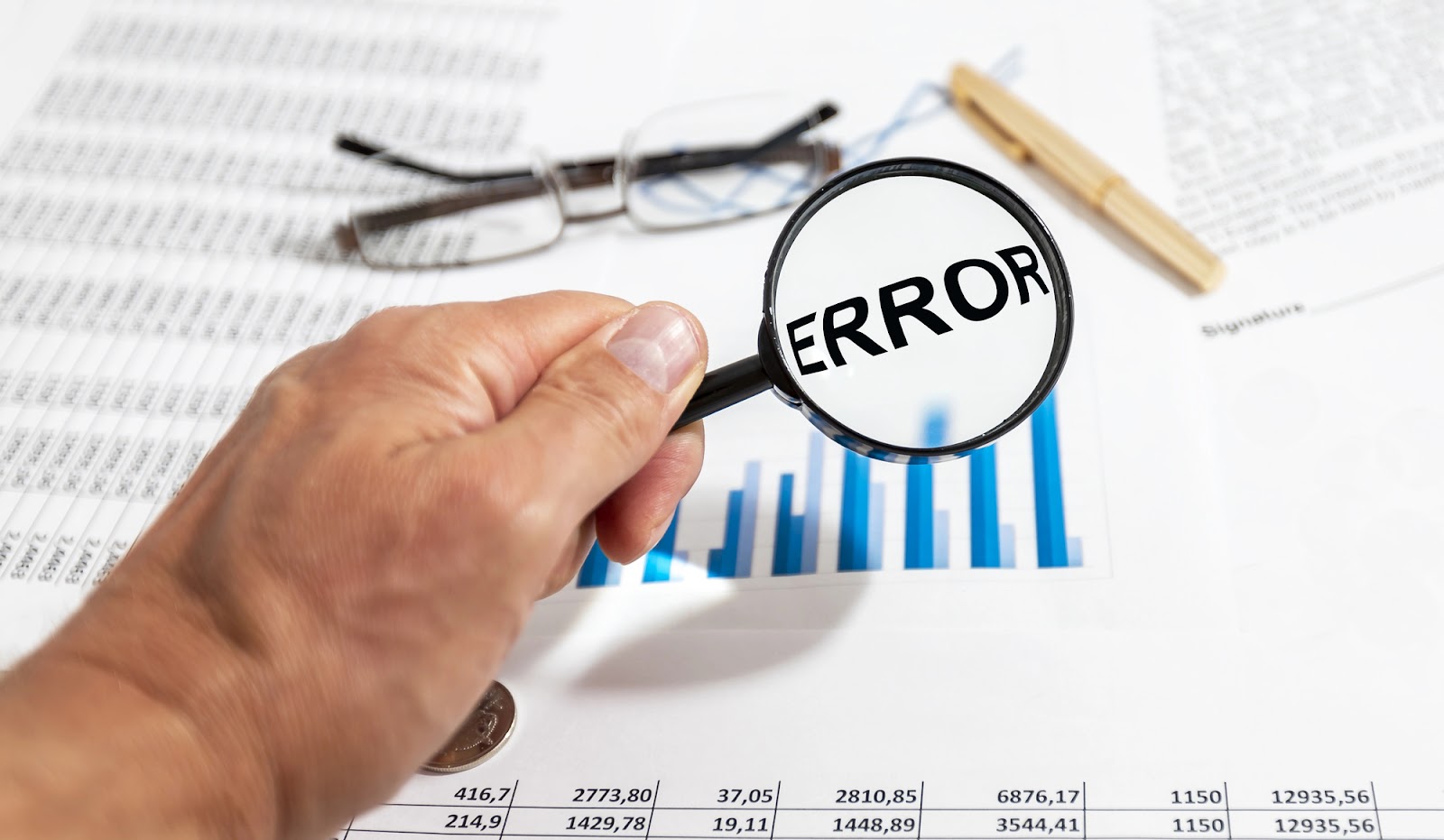Margin of error calculator, formula, and examples
The margin of error calculator tells you how much your survey results might differ from what you'd get if you surveyed the entire population. Here’s everything you need to know about it.

Surveys are fantastic tools for getting insights into people's opinions and behaviors, but since you can't realistically ask everyone, you're working with a sample.
And as much as we rely on statistics to guide our decisions, there's always a bit of uncertainty as to how reliable sampled survey results are.
The margin of error is a concept that helps you understand how much your survey results might differ from what you'd get if you surveyed the entire population (your whole target audience).
In this article, I’ll explain the meaning of margin of error, the formulas behind the margin of error calculator with examples, what is a good margin of error, and everything in between.
Let’s get started.
Quick Note: The word “population” throughout this article refers to the entire group of people in your target market. For example, if you sell shoes, all the people who buy shoes will be in the population. The word “Sample” refers to the select few individuals from that population who will take your survey.
Meaning of the margin of error

A margin of error (MOE) is used to show the amount of potential error in the results of a survey or poll.
In surveys, MOE tells us how much the sample results might differ from the actual population.
The margin of error is usually shown as a percentage. This percentage ranges from 0 to 100.
For instance, if a survey shows that 60% of people like a product, and the margin of error is ±3%, it means the true percentage of people who like the product could vary by 3 percentage points either way, i.e., it could be anywhere between 57% and 63%.
A high margin of error, such as ±10%, indicates less confidence in the accuracy of the survey results.
It means the true population value could be much different from the survey results. A low margin of error, like ±1%, indicates more confidence in the survey results and suggests that the survey results are very close to the true population value.
You also need to determine your confidence interval before using a margin of error calculator.
The confidence interval gives a range within which we expect the true population value to fall. The margin of error is half the width of the confidence interval.
For example, if the survey result is 70% and the confidence interval is 68% to 72%, the margin of error is ±2%. This means we are confident that the true value lies between 68% and 72%.
Margin of error calculator formula
There are two common ways to calculate the margin of error: using the Z-score method and using the t-score method.
Z-Score method
The Z-score method is used when the sample size is large (over 30), and the population standard deviation is known.
Here’s the formula for the Z-score margin of error calculator with standard deviation:
ME = Z × ( Standard Deviation ⁄ √Sample Size)
Where:
- ME: Margin of error
- Z: Critical value, that you can find in tables online based on your desired confidence level
- Standard deviation: How spread out the data is in the entire population. A high standard deviation means people have very different preferences, while a low one suggests everyone's kind of on the same page.
- Sample size: The number of people you actually surveyed.
This formula is ideal for rare situations where you know the standard deviation of the entire population (which is almost never in surveys!).
T-Score method
The other formula of margin of error calculator uses is the t-score method.
Margin of Error = T x Standard Error of the Mean
Where:
- T: The critical value, as described earlier, depends on your chosen confidence level.
- Standard Error of the Mean: How much your sample mean (average) might differ from the real population mean, considering the sample size.
The t-score method is used when the sample size is small (under 30), and the population standard deviation is unknown. Since we do not know the standard deviation in surveys, this formula is more practical.
How to calculate margin of error?
Here's a step-by-step breakdown of how to calculate margin of error.
1. Select a formula
Let’s say you're a marketing manager for a shoe company. You want to know what features customers prioritize (comfort, style, durability, etc).
Unfortunately, surveying everyone who might buy your shoes is unrealistic. So, you'll likely use the second formula (t-score method), which works with samples:
Margin of Error = Critical Value x Standard Error of the Mean
2. Calculate your critical value
The critical value depends on your desired confidence interval. Most surveys use a 95% confidence level, meaning you're 95% confident the real answer falls within your margin of error.
Look up "critical value table" online for your chosen confidence level.
For a 95% confidence level, the critical value is 1.96.
3. Hunt down the standard error of the mean
The standard error of the mean reflects how much your sample results might differ from the entire population's opinion.
To calculate it, you will need some information from your survey:
- Sample Size (n): The number of people you surveyed (e.g., 200 customers).
- Sample Proportion (p): The percentage of your sample who chose a specific answer (e.g., 60% said comfort is most important).
Here’s the formula to find the standard error of the mean:
Standard Error of the Mean = √(p * (1 - p) / n)
Here,
- √ = Square root
- * = multiply
- / = Division
Now, plug your numbers into the formula.
For the shoe store example we are using, the standard deviation of the mean will be:
√(0.6 * (1 - 0.6) / 200) = 0.03
4. Plug in values and calculate
Now you have all the values you need to put into the margin of error calculator formula:
- Critical Value = 1.96 (from step 2)
- Standard Error of the Mean = 0.03 (from step 3)
Margin of Error = 1.96 x 0.03 = 0.0588 ≈ 6%
5: Interpret the results
Finally, interpret the margin of error. The number tells you how much you can expect your survey results to vary from the true population value.
According to our example, with a 95% confidence level, you can be pretty confident that the true percentage of all your customers who prioritize comfort falls within is within 6% (+/-) of your sampled value, which is 60%.
Therefore, the true value could lie between 54% and 66%.
What is a good margin of error?
An acceptable margin of error is one that gives you confidence in your survey results.
Generally, the lower the margin of error, the better. It means your survey results are closer to the true population value.
A 3% to 8% margin of error in surveys is considered good.
If your margin of error is too high and you want to improve the accuracy of your survey results, you might wonder how to reduce margin of error.
Here are a few things you can do:
- Increase Sample Size: The larger your sample size, the smaller your margin of error. So, try to include more participants in your survey.
- Choose a Higher Confidence Level: Increasing the confidence level (like from 90% to 95%) will also reduce the margin of error. But keep in mind, higher confidence levels may require larger sample sizes.
- Improve Data Collection: Make sure your survey questions are unbiased and clear. Also, ensure that your sample represents the population you're studying accurately.
- Boost your response rate. The more people who actually answer your survey, the more accurate your data will be. Try offering incentives or making the survey more engaging.
Factors affecting margin of error
We know that a smaller margin of error is ideal, but what actually influences this value? There are a few key factors at play here, let’s look at them one-by-one.
- Variability in Responses
The extent to which responses vary on survey questions influences the margin of error. If there's high variability among responses, it indicates that opinions or behaviors within the population are diverse.
The variability increases the uncertainty in the estimates and results in a larger margin of error. Conversely, if responses are more consistent, the margin of error will be smaller.
- Sample Size
The size of the population being surveyed affects the margin of error. While a larger population might intuitively seem to require a larger sample size, in reality, it's the relative size of the sample to the population that matters.
If the population is large, like a country's population, even a relatively small sample can accurately represent it, and so it produces a smaller margin of error.
However, if the population is small, like residents of a specific town, a larger sample may be needed to achieve the same level of precision.
- Confidence Interval
The confidence level you choose for your survey determines how wide your margin of error will be.
A higher confidence level (like 95%) means you're more certain the real answer falls within your margin of error. But it also comes with a wider margin of error.
On the other hand, a lower confidence level (like 90%) gives you a smaller margin of error. However, you're also a little less sure of the exact answer.
- Type of Sampling
How you choose your sample can also impact your margin of error. If you use random sampling, where everyone has an equal chance of being picked, your margin of error will be lower.
But if you use convenience sampling, like just asking your friends, your margin of error could be higher because your sample might not represent the whole population well.
Create the best margin of error calculator with Formaloo!
If you're looking for a tool to create your own calculator or conduct surveys and manage responses with ease, consider using Formaloo.
Formaloo offers a comprehensive margin of error calculator builder and survey maker with a set of tools, designed to streamline the survey creation process.
With ready-to-customize templates and advanced features, Formaloo makes it simple to design surveys that yield accurate and actionable results.
Sign up for Formaloo to start creating surveys with confidence and precision.












